Docker API refers to the application program interface of docker, which is the agreement for the connection of different components of the software system. Docker mainly has three external APIs: 1. Docker Registry API; 2. Docker Hub API; 3. Docker Remote API.

The operating environment of this tutorial: linux5.9.8 system, docker-1.13.1 version, Dell G3 computer.
1. What is API
1. What is API specifically?
The word API is explained in Wikipedia as follows: Application programming interface (English: application programming interface, abbreviated as API), also known as application programming interface, is a different software system Conventions for the connection of components. After reading this explanation, I guess you are still a little confused, but it doesn't matter. Below we will introduce what an API is in layman's language.
Everyone of us has a mobile phone. When the mobile phone runs out of power, we will definitely find a fixed charger and charging cable to charge it. Use Apple for Apple, use Android for Android. But you will definitely not use an Android cable to charge an Apple phone. The reason is very simple, because your Apple phone has a Lightning interface, and the Android one has a micro interface. If you want to charge or transfer data to your mobile phone, you must buy suitable charging cables and data cables. This is the simplest and easiest understanding of the interface.
Similarly, the same is true for the program interface. Each program has a fixed external standard interface. This interface is defined by the developer who developed the program. If you want to connect to them, you should follow their interface standards.
2. What is REST
# Now learning API, I often see a word called REST, and the full English name is Representational State Transfer. So what is REST? The term REST was proposed by Dr. Roy Fielding, chairman of the Apache Foundation, and its Chinese meaning is "presentation layer state transformation". Chinese is not easy to understand, but if we learn about it from the following aspects, you can probably understand what rest is.
2.1. What is the presentation layer?
The presentation layer here refers to the presentation layer of resources. The so-called "resource" is a specific information on the network. A text, a movie, and a service can be counted as a resource. So what are these resources used to identify and represent? Then you have to use URI. For example, when we download a movie, there must be a corresponding URI address. When we read an online novel, there is also a corresponding URI address. And this address is unique and unique. The resource is identified with a URI, and we can understand that the resource has been "expressed" on the network. So when it comes to this, the meaning of the presentation layer is actually the form in which "resources" are concretely presented.
2.2. What is state transition?
In common sense, if we want to change the state of an object, we definitely need some operations and means. The same is true for resources on the Internet. When you download a movie, you must download it first, and then you can open it and enjoy it. Downloads and acquisitions require the HTTP protocol. In the HTTP protocol, there are four basic operation methods: GET, POST, PUT, and DELETE (get, create, update, delete). Through these four basic methods, some state transformation operations can be performed on resources on the network.
So, REST is the state transformation of the presentation layer. You can understand the above two points separately and then combine them together. It can be understood simply and crudely as: method URI resource.
GET /movie/war/Pearl Harbor
DELETE /movie/war/Pearl Harbor
...
2. Docker API Type
Docker’s API also follows the rest style, so after we understand the above two points, we start to learn the relevant knowledge of docker’s own API.
First of all, we regard docker as a resource. We can operate docker through the api, and the operation methods are also the same as http.
Secondly, we need to understand what APIs Docker has that can be used externally. Here Docker officially has three major external APIs
- Docker Registry API
- Docker Hub API
- Docker Remote API
1. Docker Registry API
This is the api of the docker image warehouse. By operating this API, you can Freely automate and programmatically manage your mirror warehouse.
2. Docker Hub API
Docker Hub API is an API for user management operations. Docker Hub uses verification and public namespaces to store account information and authentication. account and authorize the account. The API also allows operations on related user repositories and library repositories.
3. Docker Remote API
This API is used to control the host Docker server API, which is equivalent to the docker command line client. With it, you can remotely operate docker containers, and more importantly, you can automatically operate and maintain docker processes through programs.
3. Preparation before using the API
As we said before, the methods of http are used to operate rest api. So how to use these methods specifically? Here we provide several common ways to operate and call the docker API, and then experience it. Before experiencing it, we need to enable the docker rest api, otherwise you will not be able to use it if it is not enabled. Specific opening method:
$ vim /usr/lib/systemd/system/docker.service
Add -H tcp://0.0.0.0:8088 -H unix:///var/run/docker.sock directly after ExecStart=/usr/bin/dockerd (note that port 8088 can be defined by yourself, don’t Just conflict with the current one)
$ systemctl daemon-reload $ systemctl restart docker
After the restart is completed, we execute the curl 127.0.0.1:8088/info | python -mjson.tool command to view the status of docker (in json form, python -mjson. tool borrowed this tool to format json for easy reading)
After enabling the docker API, we still have a question, that is, where can we query the existing API of docker? Since docker provides the three major API libraries: Docker Registry API, Docker Hub API, and Docker Remote API. So where can I view specific and detailed APIs, such as what API addresses are there under the Docker Registry API? Is there an API for querying images? Have any been deleted? In fact, all of these are available. We can go directly to the official website API manual to check it. The address is: https://docs.docker.com/engine/api/v1.38/ (Which version do you want to see? Just replace the last v1.38 with the target version number)
It should be noted here that the official no longer recommends using versions before API v1.12. It is recommended to use v1.24 or higher versions. .
To check the local docker API version, you can use the docker version command:

4. How to operate the docker API
1. Simple curl method
I think everyone is familiar with the CURL command, which is installed by default under Linux. Many methods of testing http can directly use CURL.
For example, if we check the detailed information of docker images, we can directly use curl to retrieve it:
$ curl -X GET http://127.0.0.1:8088/images/json

This way the display will be more confusing, we can Add python -mjson.tool after the command to format
$ curl -X GET http://127.0.0.1:8088/images/json | python -mjson.tool

. The result format will be more standardized and easier to read.
View all containers containers:
$ curl -X GET http://127.0.0.1:8088/containers/json | python -mjson.tool
Create a containers container:
Here create a container for the mariadb database, set the password to 123456, and the listening port is 3306
$ curl -X POST -H "Content-Type: application/json" -d '{
"Image": "mariadb",
"Env": ["MYSQL_ROOT_PASSWORD=123456"],
"ExposedPorts": {
"3306/tcp": {}
},
"HostConfig": {
"PortBindings": {
"3306/tcp": [{"HostIp": "","HostPort": "3306"}]
}
},
"NetworkSettings": {
"Ports": {
"5000/tcp": [{"HostIp": "0.0.0.0","HostPort": "3306"}]
}
}
}' http://127.0.0.1:8088/containers/createStart/stop/restart a containers container:
$ curl -X POST http://127.0.0.1:8088/containers/{id}/start (注意这里是POST方法)
$ curl -X POST http://127.0.0.1:8088/containers/{id}/stop (注意这里是POST方法)
$ curl -X POST http://127.0.0.1:8088/containers/{id}/restart (注意这里是POST方法)
...
There are many API methods, you can log in to the link mentioned above to view
https:/ /docs.docker.com/engine/api/v1.38
2. Python program script method
Python is very powerful and everyone recognizes this. Many automation scenarios now use python to load third-party corresponding libraries, and then write business logic to automate devops operation and maintenance. Docker also provides a very powerful library for Python, called docker. We can log in to the official python sdk address to learn how python specifically operates docker.
The address is: https://docker-py.readthedocs.io/en/stable/
2.1. Install docker python library
$ pip install docker
2.2. Start using
import docker
client = docker.DockerClient(base_url='unix://var/run/docker.sock', version="auto")
client.containers.run("ubuntu", "echo hello world")This is a very simple usage example, we can analyze it:
The first line indicates the introduction of the third-party library docker.
The second line is used to configure the basic information of the Docker server, including base_url (the address of the Docker server) and version (auto can automatically check the version of docker).
The third line is equivalent to running a docker run ubuntu echo hello world command.
2.3. Advanced use
import docker client = docker.DockerClient(base_url="tcp://ip:port") client.images.list() # 类似docker images命令,显示image的信息列表 client.containers.list() # 类似docker ps命令 client.containers.list(all=True) # 类似docker ps -a命令 container = client.containers.get(container_id) # 获取daodocker容器,这里container_id 是你要输入的具体容器id container.start() # 类似docker start 传入具体的容器id ,开启容器
Summary: Now many companies have entered the era of automated operation and maintenance, so it is very useful to master the skills and rules of using APIs necessary. Above we have roughly introduced the introduction to the docker api. In fact, you have to be very good at it. There is a lot of flexibility and complexity here, but here you need some knowledge of script programming.
Recommended learning: "docker video tutorial"
The above is the detailed content of what is docker api. For more information, please follow other related articles on the PHP Chinese website!
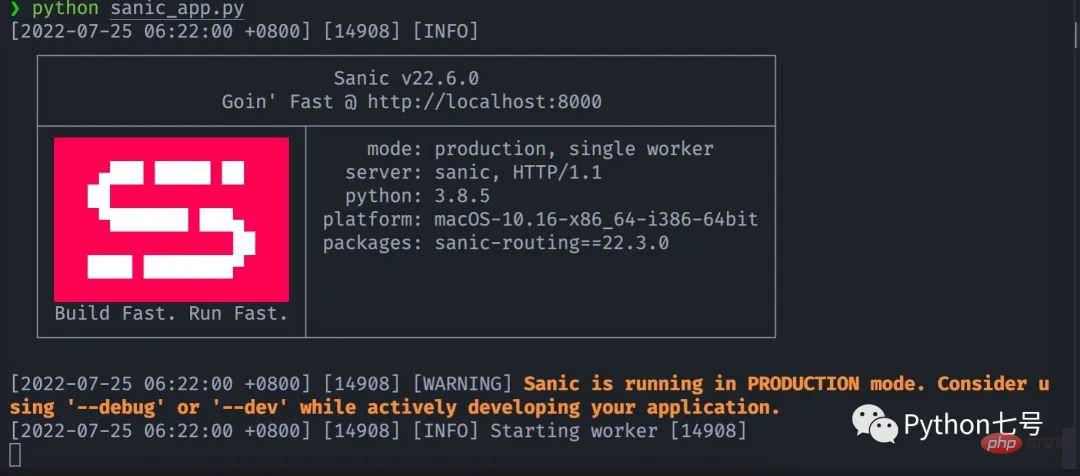 如何快速把你的 Python 代码变为 APIApr 14, 2023 pm 06:28 PM
如何快速把你的 Python 代码变为 APIApr 14, 2023 pm 06:28 PM提到API开发,你可能会想到DjangoRESTFramework,Flask,FastAPI,没错,它们完全可以用来编写API,不过,今天分享的这个框架可以让你更快把现有的函数转化为API,它就是Sanic。Sanic简介Sanic[1],是Python3.7+Web服务器和Web框架,旨在提高性能。它允许使用Python3.5中添加的async/await语法,这可以有效避免阻塞从而达到提升响应速度的目的。Sanic致力于提供一种简单且快速,集创建和启动于一体的方法
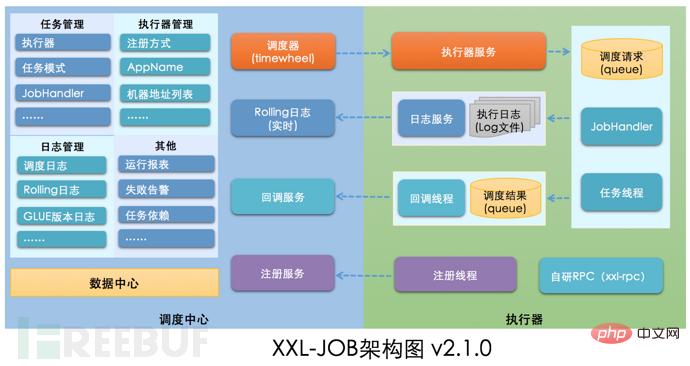 如何进行XXL-JOB API接口未授权访问RCE漏洞复现May 12, 2023 am 09:37 AM
如何进行XXL-JOB API接口未授权访问RCE漏洞复现May 12, 2023 am 09:37 AMXXL-JOB描述XXL-JOB是一个轻量级分布式任务调度平台,其核心设计目标是开发迅速、学习简单、轻量级、易扩展。现已开放源代码并接入多家公司线上产品线,开箱即用。一、漏洞详情此次漏洞核心问题是GLUE模式。XXL-JOB通过“GLUE模式”支持多语言以及脚本任务,该模式任务特点如下:●多语言支持:支持Java、Shell、Python、NodeJS、PHP、PowerShell……等类型。●WebIDE:任务以源码方式维护在调度中心,支持通过WebIDE在线开发、维护。●动态生效:用户在线通
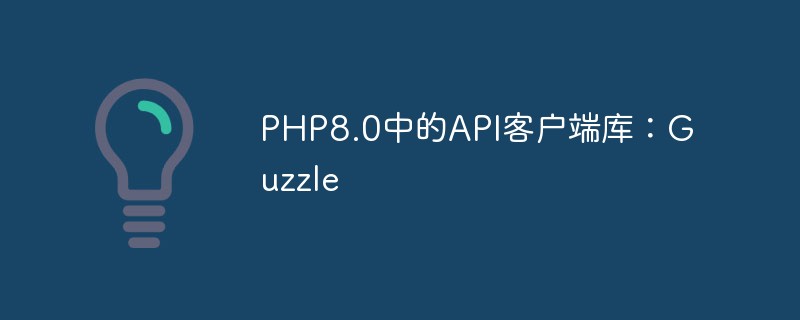 PHP8.0中的API客户端库:GuzzleMay 14, 2023 am 08:54 AM
PHP8.0中的API客户端库:GuzzleMay 14, 2023 am 08:54 AM随着网络技术的发展,Web应用程序和API应用程序越来越普遍。为了访问这些应用程序,需要使用API客户端库。在PHP中,Guzzle是一个广受欢迎的API客户端库,它提供了许多功能,使得在PHP中访问Web服务和API变得更加容易。Guzzle库的主要目标是提供一个简单而又强大的HTTP客户端,它可以处理任何形式的HTTP请求和响应,并且支持并发请求处理。在
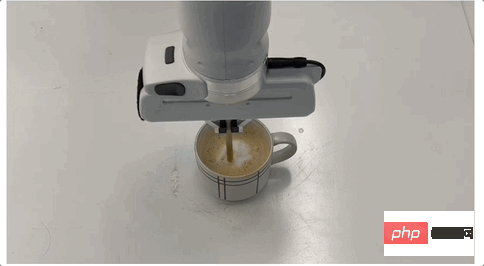 让机器人学会咖啡拉花,得从流体力学搞起!CMU&MIT推出流体模拟平台Apr 07, 2023 pm 04:46 PM
让机器人学会咖啡拉花,得从流体力学搞起!CMU&MIT推出流体模拟平台Apr 07, 2023 pm 04:46 PM机器人也能干咖啡师的活了!比如让它把奶泡和咖啡搅拌均匀,效果是这样的:然后上点难度,做杯拿铁,再用搅拌棒做个图案,也是轻松拿下:这些是在已被ICLR 2023接收为Spotlight的一项研究基础上做到的,他们推出了提出流体操控新基准FluidLab以及多材料可微物理引擎FluidEngine。研究团队成员分别来自CMU、达特茅斯学院、哥伦比亚大学、MIT、MIT-IBM Watson AI Lab、马萨诸塞大学阿默斯特分校。在FluidLab的加持下,未来机器人处理更多复杂场景下的流体工作也都
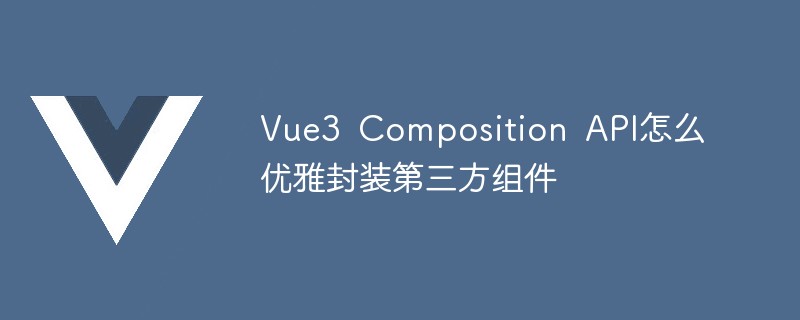 Vue3 Composition API怎么优雅封装第三方组件May 11, 2023 pm 07:13 PM
Vue3 Composition API怎么优雅封装第三方组件May 11, 2023 pm 07:13 PM前言对于第三方组件,如何在保持第三方组件原有功能(属性props、事件events、插槽slots、方法methods)的基础上,优雅地进行功能的扩展了?以ElementPlus的el-input为例:很有可能你以前是这样玩的,封装一个MyInput组件,把要使用的属性props、事件events和插槽slots、方法methods根据自己的需要再写一遍://MyInput.vueimport{computed}from'vue'constprops=define
 SpringBoot怎么实现api加密May 15, 2023 pm 11:10 PM
SpringBoot怎么实现api加密May 15, 2023 pm 11:10 PMSpringBoot的API加密对接在项目中,为了保证数据的安全,我们常常会对传递的数据进行加密。常用的加密算法包括对称加密(AES)和非对称加密(RSA),博主选取码云上最简单的API加密项目进行下面的讲解。下面请出我们的最亮的项目rsa-encrypt-body-spring-boot项目介绍该项目使用RSA加密方式对API接口返回的数据加密,让API数据更加安全。别人无法对提供的数据进行破解。SpringBoot接口加密,可以对返回值、参数值通过注解的方式自动加解密。什么是RSA加密首先我
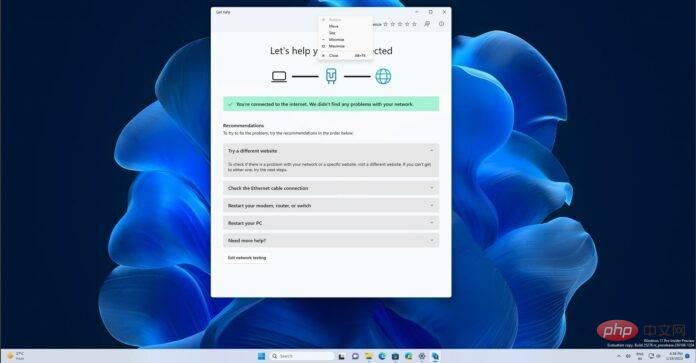 Windows 11 正在获得一项新的 API 支持的功能来解决网络问题Apr 20, 2023 pm 02:28 PM
Windows 11 正在获得一项新的 API 支持的功能来解决网络问题Apr 20, 2023 pm 02:28 PM当您的WindowsPC出现网络问题时,问题出在哪里并不总是很明显。很容易想象您的ISP有问题。然而,Windows笔记本电脑上的网络并不总是顺畅的,Windows11中的许多东西可能会突然导致Wi-Fi网络中断。随机消失的Wi-Fi网络是Windows笔记本电脑上报告最多的问题之一。网络问题的原因各不相同,也可能因Microsoft的驱动程序或Windows而发生。Windows是大多数情况下的问题,建议使用内置的网络故障排除程序。在Windows11
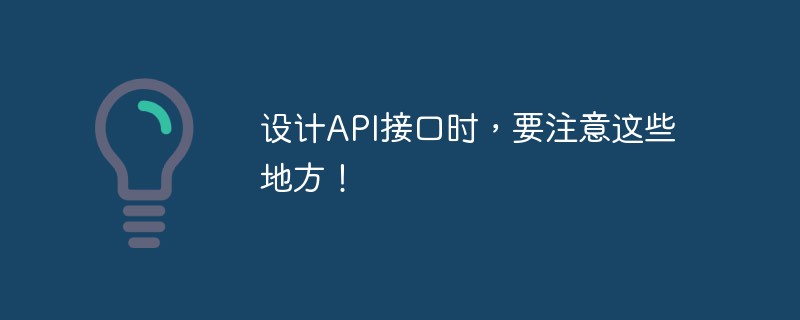 设计API接口时,要注意这些地方!Jan 09, 2023 am 11:10 AM
设计API接口时,要注意这些地方!Jan 09, 2023 am 11:10 AM本篇文章给大家带来了关于API的相关知识,其中主要介绍了设计API需要注意哪些地方?怎么设计一个优雅的API接口,感兴趣的朋友,下面一起来看一下吧,希望对大家有帮助。


Hot AI Tools

Undresser.AI Undress
AI-powered app for creating realistic nude photos

AI Clothes Remover
Online AI tool for removing clothes from photos.

Undress AI Tool
Undress images for free

Clothoff.io
AI clothes remover

AI Hentai Generator
Generate AI Hentai for free.

Hot Article

Hot Tools

SublimeText3 English version
Recommended: Win version, supports code prompts!

DVWA
Damn Vulnerable Web App (DVWA) is a PHP/MySQL web application that is very vulnerable. Its main goals are to be an aid for security professionals to test their skills and tools in a legal environment, to help web developers better understand the process of securing web applications, and to help teachers/students teach/learn in a classroom environment Web application security. The goal of DVWA is to practice some of the most common web vulnerabilities through a simple and straightforward interface, with varying degrees of difficulty. Please note that this software

mPDF
mPDF is a PHP library that can generate PDF files from UTF-8 encoded HTML. The original author, Ian Back, wrote mPDF to output PDF files "on the fly" from his website and handle different languages. It is slower than original scripts like HTML2FPDF and produces larger files when using Unicode fonts, but supports CSS styles etc. and has a lot of enhancements. Supports almost all languages, including RTL (Arabic and Hebrew) and CJK (Chinese, Japanese and Korean). Supports nested block-level elements (such as P, DIV),

Notepad++7.3.1
Easy-to-use and free code editor

PhpStorm Mac version
The latest (2018.2.1) professional PHP integrated development tool







